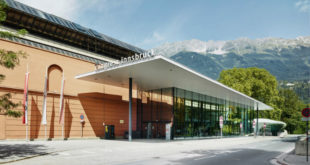Brian Ludwig, Senior Vice President of Sales at Cvent, takes a near and long-term view at what technology event organisers, venues, and attendees should be on the lookout for as the meetings and events industry continues to evolve.

As a leader in the event technology space, it’s critical that we stay ahead of the innovation curve – and that’s truer now than ever before. Why? Because while the meetings and events landscape has changed and evolved dramatically since 1999 when we started Cvent, most of these changes have been slow and gradual. These last two years? They have been completely transformational – accelerated by the industry’s rapid digital transformation in response to the pandemic.
Of course, a significant part of this transformation has been the exponential rise of virtual events and hybrid events (which combine the traditional in-person experience with an immersive virtual online experience). Back in 2016, I gave a presentation in which I predicted the growth of hybrid events, albeit at a more gradual pace. At the time, the prediction seemed hard to believe as only 2% of events were using such technology. Now…it’s common place.
In short, in this new events landscape, where technology is more prevalent – and I’d even say more deeply ingrained – it’s more important than ever that we look to the future and map out what comes next for the industry. A critical lesson I’ve learned from the pandemic is that we don’t want to be caught flat-footed. So, looking ahead and taking a creative view on what comes next ensures that we, as an industry, can adapt to and support these changes, all with a little help from technology.
Here are some of the top themes worth watching over the next several years and beyond:
- Sustainability will become the foundation on which future venues are built. As structural engineers and architects use the latest technology to create new materials or use old ones in different ways, we can expect to see a revolution in venue design. Think bacteria that eats plastics; paving and flooring materials that turn footsteps into useable energy; and even external surfaces that clean and filter pollution from passing vehicles (this last one is currently being used on a hospital in Mexico). Sustainability is already a critical concern for event organisers, and with these new features, venues will play an integral role in reducing the impact large meetings and events have on our environment.
- Travel to an event will become a part of the event itself as forward-looking organisers look to better utilise the time delegates spend on planes, trains, and automobiles by adapting them to become micro venues. Airlines are already starting to reimagine the interior of their airplanes – creating meeting rooms and working spaces. Just think how much an event’s ROI and sustainability credentials will improve if the networking and knowledge sharing start at the initial point of departure, rather than when arriving in the destination?
- Augmented reality is set to grow significantly as organisers discover the unique benefits – especially when it comes to creating a truly immersive, personalised event experience. Through personal phones and other mobile devices, we might layer in custom content, insights, and information that is relevant and targeted to each individual attendee. Not to mention the advertising or promotional content opportunity for event sponsors.
- Artificial Intelligence (AI) capabilities continue to be adapted and elevated to meet the unique needs of meetings and events. For example, an AI match-making engine can be used to make relevant recommendations onsite, perhaps via chatbot, such as people to meet, conference sessions to attend, products that would best suit the interests of the attendee, and event local restaurant suggestions to network with fellow delegates and experience the regional cuisine. The result? Deeply engaged attendees who feel like they are truly getting the most out of the event.
- Virtual and hybrid events will see greater use of virtual reality (VR) and the metaverse as the technology moves beyond the world of gaming and into the mainstream. Virtual attendees will be able to have a “real-life” experience from the comfort of their own homes or offices as they navigate events via drones, robots and cameras alongside their peers attending in-person. This offers an incredible opportunity to increase engagement between virtual and in-person delegates.
Today, technology already acts as a facilitator to make events more accessible, sustainable, efficient, interactive, engaging, educational, and the list goes on. As we look ahead, technology will play an even more pivotal role in amplifying and enhancing digital components that complement and enhance both the in-person and virtual experience. No matter what the mix of in-person, virtual, and hybrid events is in the future, the reality is, events are a critical part of the business landscape – and it’s technology that will play a vital role in maximising their impact and driving business outcomes.

 Convention International I MICE News und Trends aus der MICE – Branche
Convention International I MICE News und Trends aus der MICE – Branche




